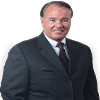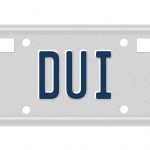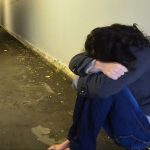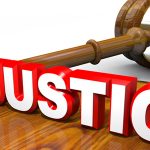We don’t hear very much about the Mafia in Los Angeles these days. Gangs and terrorists are a much bigger concern in the 21st century, and the typical Los Angeles County criminal defense attorney probably defends more accused drunk drivers and shoplifters than mobsters. It wasn’t always this way, however. Organized crime activity was so prevalent in Los Angeles in the 1940s and 1950s that the Los Angeles Police Department (LAPD) formed a dedicated “Gangster Squad” that sometimes bent the rules to intimidate powerful mobsters and fight their criminal operations.
The LAPD Gangster Squad was created in 1946 to keep the East Coast Mafia out of the city. Anxiety about organized crime from “back east” is as old as the City of Los Angeles itself. Back in 1891, when 70,000 people lived here under the protection of only 75 police officers, LAPD Chief John Glass was warning the city’s residents about “eastern crooks” arriving here in search of good weather and easy crime targets. A few years later eastern crooks became “eastern gangsters,” and when Al Capone came to town in 1927, the officer who accompanied him to the train station – Ed “Roughhouse” Brown – became a local hero.

By 1946, a new group of eastern gangsters was demanding a quarter of the take from several of the best-known Los Angeles nightclubs. Afraid for their families, the owners were caving into the extortion. After two Chicago mobsters had been “rubbed out” in Hollywood, the newspaper headlines were screaming about a gang war on the streets, so LAPD Chief C.B. Horrall decided to create a special unit exclusively dedicated to fighting organized crime and especially the “East Coast Mafia.”
HOW DID THE GANGSTER SQUAD OPERATE?
Eighteen LAPD officers were originally recruited, but only eight finally made the original Gangster Squad. “We did a lot of things that we’d get indicted for today,” Sgt. Jack O’Mara later told the Los Angeles Times. They planted bugs without regard for warrants. They shoved suspected mobsters into cars and drove to the Hollywood Hills to “have a little heart-to-heart talk with ‘em,” as Sgt. O’Mara characterized it, “emphasize the fact that this wasn’t New York, this wasn’t Chicago, this wasn’t Cleveland. And we leaned on ‘em a little, you know what I mean?”
Officially, the Gangster Squad didn’t exist. They drove Fords made in the early 1940s with holes in the floorboards. Squad members met on street corners or in parking lots. At times five men rode in one car. Other LAPD officers thought they were internal spies. But the Gangster Squad had only one mission. They were feverishly dedicated to making life uncomfortable for powerful mob bosses like Mickey Cohen, putting them in prison, or at least running them out of Los Angeles.
The Gangster Squad first made newspaper headlines in 1947 when six out-of-town mobsters were stopped in traffic while they were conducting a meeting in a limousine on Wilshire Boulevard. The six were booked on “suspicion of robbery” – without any evidence whatsoever – and four of them were escorted to the L.A. County border. No one was convicted, but the Gangster Squad had protected the city from some bad guys, and they’d sent a message to Mickey Cohen and others like him.
HOW DID THE GANGSTER SQUAD INTIMIDATE MOB BOSS MICKEY COHEN?
When Officers Jerry Greeley and Lindo “Jaco” Giacopuzzi were assigned to stake out Mickey Cohen’s haberdashery on the Sunset Strip, they didn’t want the mob boss to know whether they were cops or out-of-town hoods working for another crime family. They took the plates off their unmarked car and dug plates from Illinois out of the trash at the Department of Motor Vehicles. They parked up the block from Cohen’s business. Giacopuzzi remembered that “when we left … all the men in Mickey’s establishment there came out on the sidewalk … and Greeley leaned way out of the window with the Tommy gun. And you should have seen them hit the deck.”

When Cohen renovated a home on Moreno Drive, five Gangster Squad officers posed as construction workers, and they concealed a microphone behind Cohen’s fireplace. He found the mic when his gardener cut through a wire with a shovel, and subsequent attempts to eavesdrop on Cohen were equally unfruitful. Cohen turned the ranch home into an armed, well-guarded fortress. The Gangster Squad was never able to pin anything on Cohen that would stick. Cohen was investigated with other crime figures by the U.S. Senate’s Special Committee on Organized Crime in 1950 and was finally sentenced to federal prison for income tax evasion in 1951.
WHAT EVENTUALLY BECAME OF THE GANGSTER SQUAD?
William Worton was named the LAPD’s interim chief in 1949. He boosted the size of the Gangster Squad and renamed it the “Organized Crime Intelligence Division” (OCID). When William Parker became the LAPD’s Chief of Police in 1950, he expanded the team even more and added female officers. The 2013 film Gangster Squad, starring Josh Brolin, Nick Nolte, and Sean Penn, tells the story but takes substantial “creative liberties” with the actual historical events.
With the U.S. Supreme Court’s rulings in the Gideon and Miranda cases in 1963 and 1966, the nation’s judges finally cracked down on the kinds of police practices that the Gangster Squad relied on. Today, no eavesdropping is allowed without a warrant, and if the cops decide to “have a little heart-to-heart talk” with someone, it’s illegal police misconduct. The Gangster Squad continued into the 1970s and 1980s as the OCID, but former OCID detective Mike Rothmiller says that in those decades, the OCID was more interested in celebrities and politicians than actual mobsters.

Today, if you are charged with a crime in Southern California, contact an experienced Los Angeles County criminal defense attorney, and if police misconduct was a factor in your arrest, tell your attorney. Most LAPD officers operate professionally, but of course, in any large group, the bad is found right next to the good. While there’s never a just cause for it, police misconduct sometimes still happens in Southern California. Misconduct by law enforcement officers can include verbal abuse, excessive force, assault, and racial discrimination. Police may officers use necessary force, but the law now imposes and strictly enforces limits on what is allowed







